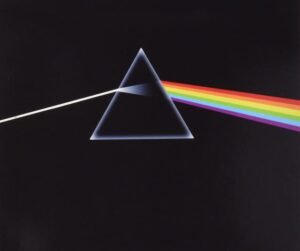
The Cultural Significance of Black Album Covers
Throughout the history of music, the aesthetic choices made by artists have often transcended mere visual appeal, carving out an emotional and cultural narrative that resonates deeply with audiences. Black album covers, in particular, stand out as a powerful artistic choice, evoking a myriad of feelings and interpretations. The color black has long been associated with mystery, sophistication, and rebellion, characteristics that artists often seek to convey through their work.
Historically, black has served as a canvas that allows other elements—whether it be typography, imagery, or textures—to emerge with greater intensity. For instance, iconic albums such as The Beatles’ “The Beatles” (commonly known as The White Album) and Metallica’s self-titled “Black Album” utilize dark, enveloping shades that not only signify a departure from their previous works but also encapsulate a broader emotional spectrum. The stark black cover of Metallica’s 1991 release reflected a more mature and aggressive sound, marking a pivotal moment in the heavy metal genre.
Diving into socio-political landscapes, black album covers often signify defiance, a visual protest against societal norms. Artists from various genres have harnessed the symbolic weight of black to assert individuality and challenge conventions. The use of this color can also evoke feelings of melancholy or introspection, inviting listeners to engage more deeply with the music. For example, the black-and-white cover of Pink Floyd’s “The Wall” mirrors the album’s themes of alienation and loss, serving as a visual antecedent to the complex auditory journey within.
Moreover, as cultural movements evolve, the significance of black album covers adapts accordingly. From punk to hip-hop, artists have employed dark aesthetics to capture the essence of their messages while bridging the gap between visual art and music. Thus, black album covers encompass much more than mere graphic design; they serve as a compelling reflection of the artists’ intentions, contextual complexities, and the emotional experiences that their music elicits. They continue to influence subsequent generations of musicians and visual artists alike.
Iconic Black Album Covers in Music History
Throughout music history, black album covers have often left a lasting impression, symbolizing a departure from traditional aesthetics and a bold embrace of minimalism. One of the most significant examples is Metallica’s self-titled album commonly referred to as the ‘Black Album,’ released in 1991. The cover features a simple black design with a subtle, embossed image of a snake, which set a new standard in the heavy metal genre. This album was a commercial triumph, marking a shift towards a more accessible sound that reached an expansive audience, ultimately influencing numerous artists across various musical styles.
In contrast, The Beatles’ ‘The White Album,’ although primarily considered white due to its cover, also serves as an essential counterpoint in this discourse about album art. The deliberate choice for a stark white design contrasted with vibrant color schemes of their earlier works, challenging the norms of visual presentation in music. It was emblematic of their experimental phase and evoked a range of interpretations from fans and critics alike. The simplicity of the black on white aesthetic was revolutionary, and the minimalist approach inspired future musicians and artists to explore new avenues in graphic design.
Additionally, the influence of black album covers extends into contemporary music, with artists like Billie Eilish using dark and moody aesthetics to resonate with current themes and emotions. Eilish’s album ‘When We All Fall Asleep, Where Do We Go?’ features a striking cover that accentuates her introspective themes. This legacy serves to remind us of the power encapsulated within black album covers; they often convey complex narratives that mirror the artists’ inner worlds, leaving a profound impact on pop culture and the music industry as a whole.
The Artistic Approach to Designing Black Album Covers
The design of black album covers is a fascinating intersection of artistry and emotional expression. Artists and designers often utilize color theory to convey specific moods or themes, even when working within the confines of a predominantly black palette. Black, often associated with sophistication, depth, and complexity, carries unique meanings in different cultural contexts. This nuanced understanding allows designers to craft powerful visuals that resonate deeply with listeners.
Symbolism plays a critical role in the creation of these album covers. For instance, the use of black can symbolize mourning, rebellion, or elegance, depending on the intended message of the music. Thus, the choice to use a black cover is rarely arbitrary; it involves a careful selection of imagery and symbolism that aligns with the artist’s vision and the album’s narrative. Additionally, minimalism is often a fundamental aspect of black album cover designs. By stripping away excess elements, designers can focus the audience’s attention on the essential components of the artwork, often enhancing the emotional impact.

Using contrast effectively is a key technique in this design approach. Integrating lighter elements, whether they be typography, images, or textures, against a dark background can create a striking visual balance that captures the viewer’s attention. This contrast can evoke curiosity and intrigue, compelling potential listeners to explore the music further. Moreover, the use of texture—whether through matte finishes, glossy highlights, or embossed prints—adds a tactile dimension to the album cover, making it a multisensory experience.
Typography, too, plays an essential role. The choice of font can evoke different emotions and lend personality to black album covers. Whether opting for bold, modern typefaces or elegant, script-like fonts, the decisions made in typography can greatly influence the overall aesthetic. In conclusion, the artistry behind black album covers embodies a complex blend of emotional storytelling, symbolism, and technical skills that ultimately aims to connect the music with its audience on a profound level.
Contemporary Trends in Black Album Cover Art
The evolution of black album covers has taken on a new dimension in the contemporary art scene, reflecting not only the artists’ creative prowess but also the changing dynamics of music consumption and presentation. In an era driven by digital media, artists are reimagining traditional black covers by integrating innovative techniques that enhance visual engagement. One of the most significant trends is the incorporation of augmented reality (AR) into album art. This technology allows fans to interact with the cover through their smartphones, unveiling layers of content that provide a deeper connection to the music. For instance, scanning a black album cover could reveal animated visuals or bonus materials, transforming a static image into an immersive experience.
Additionally, the rise of interactive designs has redefined how black album covers are perceived. Artists are experimenting with dynamic elements, such as changing visuals based on the viewer’s perspective or even sound-responsive graphics. These innovations appeal to a younger, tech-savvy audience that values interactivity and the uniqueness of their music experience. The use of social media platforms has further amplified the impact of black album covers. Artists can leverage these channels not only to showcase their artwork but also to engage their audience directly, gathering instant feedback that influences future designs. The aesthetic appeal of black covers, combined with compelling narratives shared across social media, creates a powerful form of marketing that resonates in today’s fast-paced environment.
Moreover, the shift towards sustainability in design is becoming prominent. Many artists are now opting for eco-friendly materials while maintaining the striking visual integrity of their black album covers. This trend reflects a broader societal commitment to environmental responsibility and resonates with audiences who prioritize ethical consumption. In summary, the contemporary trends in black album cover art illustrate a dynamic blend of tradition and innovation, positioning artists to create impactful visual statements that resonate with modern audiences while embracing technological advancements.



